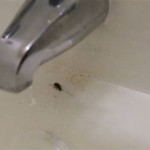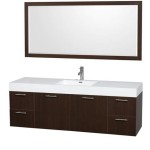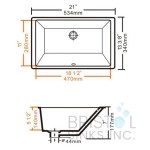Tiny Black Ants In Bathroom: An Informative Guide
The appearance of tiny black ants in the bathroom can be a frustrating and unpleasant experience. These ants can contaminate food, spread bacteria, and leave unsightly trails throughout your bathroom. Understanding the causes of their invasion and implementing effective control measures are crucial to eliminate this pest problem.
Causes of Black Ant Infestations in Bathrooms
Several factors contribute to black ant infestations in bathrooms:
- Moisture: Bathrooms are inherently moist environments, which is attractive to ants seeking sources of water.
- Food sources: Ants are drawn to sugary substances and food debris left behind on countertops, floors, and in drains.
- Entry points: Ants can enter bathrooms through cracks in walls, gaps around windows and doors, and unsealed pipes.
- Poor sanitation: Dirty bathrooms, with accumulated dust, hair, and soap scum, provide nesting and foraging opportunities for ants.
Identification of Black Ant Species
Identifying the specific species of black ants in your bathroom is essential for selecting the most effective control measures:
- Odorous house ant: Emits a distinct, rotten coconut smell when crushed.
- Pavement ant: Small, dark-brown or black ants that nest in soil and cracks in pavement.
- Carpenter ant: Larger, black ants that excavate wood to create nesting galleries.
Effective Control Measures
To effectively control tiny black ants in bathrooms, a comprehensive approach is recommended:
- Clean and disinfect: Thoroughly clean your bathroom, removing all food debris, dust, and soap scum. Clean drains regularly to prevent clogs and eliminate potential breeding grounds.
- Seal entry points: Inspect your bathroom for any cracks or gaps around windows, doors, and pipes. Seal these entry points with caulk or expanding foam.
- Eliminate moisture sources: Fix any leaks or condensation issues. Use a dehumidifier to reduce excess moisture in the bathroom.
- Use ant bait traps: Place ant bait traps in areas where ants are active. These traps contain insecticide that attracts ants and kills them upon ingestion.
- Apply ant repellent: Apply ant repellent barriers around entry points and areas where ants are seen. Natural repellents, such as essential oils of peppermint or tea tree oil, can be effective.
- Call a professional pest control company: If the infestation persists despite home remedies, consider contacting a professional pest control company for targeted treatment and prevention strategies.
Prevention Tips
Preventing tiny black ants from returning to your bathroom is essential. Consider these preventive measures:
- Keep your bathroom clean and clutter-free.
- Store food in sealed containers.
- Dispose of trash regularly.
- Inspect your bathroom regularly for ant activity and seal any potential entry points.
Conclusion
With proper identification, effective control measures, and preventive steps, you can successfully eliminate and prevent tiny black ants from infesting your bathroom. Remember, a clean and well-maintained bathroom is less likely to attract and harbor these unwanted pests.

What Are These Little Black Ants Northwest Exterminating

How To Get Rid Of Tiny Black Ants Clegg S Pest Control

Ants In Your Bathroom Here S How To Get Rid Of Them Native Pest Management

How To Stop Ants From Invading Your Bathroom Identification And Prevention Tips Tabor Pest Control

How To Get Rid Of Tiny Ants In Your Bathroom

How To Get Rid Of Ants In The Bathroom Sink Pest Control Boise Idaho Pestcom Management

How To Get Rid Of Little Black Ants In Your Bathroom Housekeeping Wonderhowto

Pest Control Pros Say It S Common To Find Ants In The Bathroom

How To Get Rid Of Little Black Ants Maggie S Farm Ltd
Why Are There Tiny Ants In My Home And What Can I Do About It Abc News
See Also







